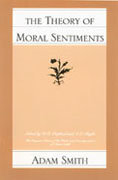Question
You plan to sell a product to a market composed of two market segments,AandB, each with their own buying habits. SegmentAis 60% of the entire
You plan to sell a product to a market composed of two market segments,AandB, each with their own buying habits. SegmentAis 60% of the entire market, andBis 40%. Nevertheless, you would like to know the demand curve for the entire market as a whole (since you have to set one price to the whole market). You may assume that demand curves are linear for this problem.
From two previous marketing studies, you have the following data.
Market study 1:A survey was given to a random sample of 2000 buyers from segmentA. Those buyers were offered the product at a price of $20. Of the sample, 200 participants indicated they would buy your product at this price and the remainder said they would not.
Market study 2:A survey was given to a random sample of 1500 buyers from segmentB. Those buyers were offered the product at a price of $30. Of the sample, 75 shoppers indicated they would buy your product at this price and the remainder said they would not.
Your unit (marginal) cost of production is $10. Is there sufficient data to determine a profit maximizing price? If not, in what way is the data deficient? (Provide a comment specific to this setup, as opposed to criticisms of surveys in general.)
Step by Step Solution
There are 3 Steps involved in it
Step: 1

Get Instant Access to Expert-Tailored Solutions
See step-by-step solutions with expert insights and AI powered tools for academic success
Step: 2

Step: 3

Ace Your Homework with AI
Get the answers you need in no time with our AI-driven, step-by-step assistance
Get Started


